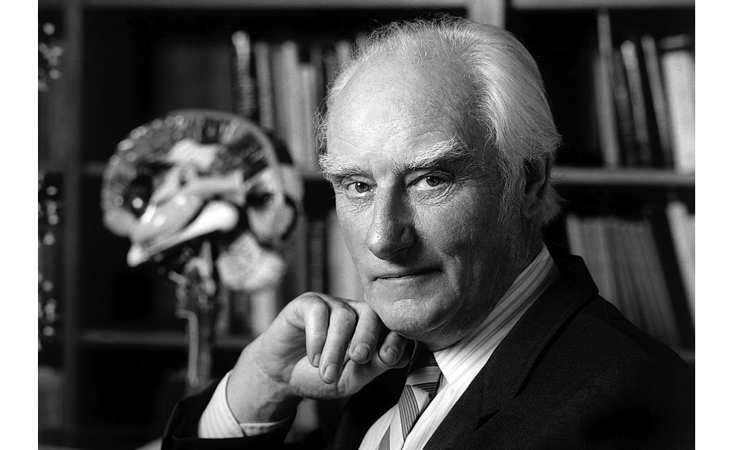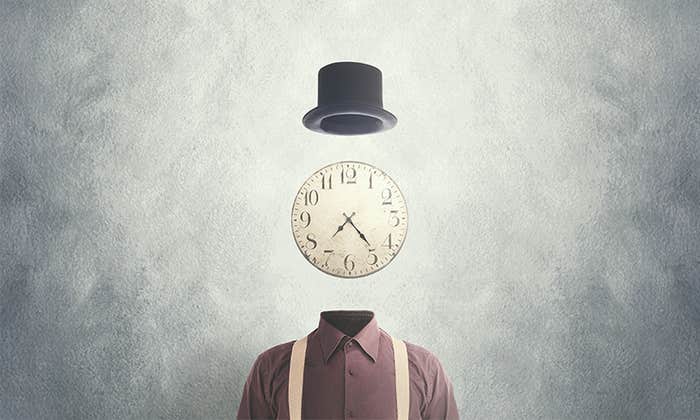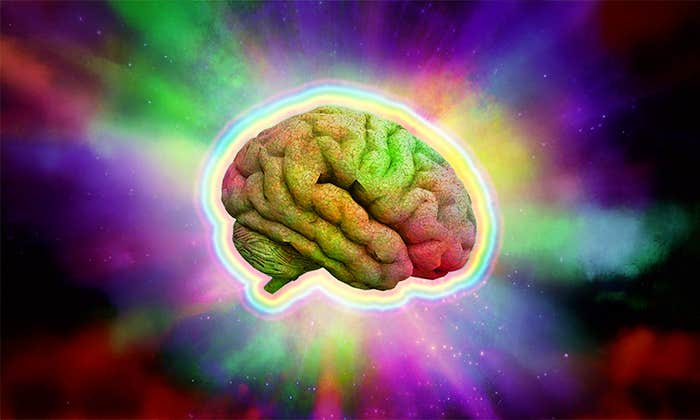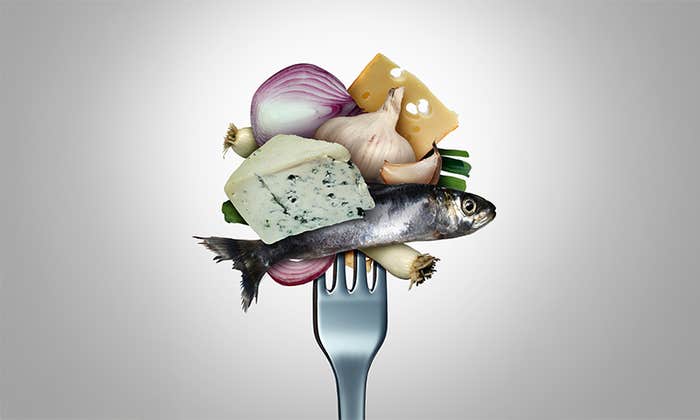In 1976, Francis Crick arrived at the Salk Institute in La Jolla, California, overlooking a Pacific Shangri-La with cotton candy skies and a beaming, blue-green sea. He had already won the Nobel Prize for co-discovering the double-helix structure of DNA, revealing the basis of life to be a purely physical, not a mystical, process. He hoped to do the same thing for consciousness. If matter was strange enough to explain a creature’s life code, he thought, maybe it’s strange enough to explain a creature’s mind, too.
For something that everybody walks around with everyday, consciousness wouldn’t seem to be as immense a puzzle as the origin of the universe. It’s just that difficult to imagine how subjective experience can arise from basic physical elements like atoms and molecules. It seems like there must be more to the story. Small wonder, then, that for ages people believed that consciousness was a function of the soul, far beyond the grasp of science. Consequently, consciousness became the strongest argument for vitalism, the idea that life is dependent on immaterial or non-physical forces. Crick, a lifelong defender of materialism, was absolutely determined when he arrived in California to dispel the notion from consciousness and blaze a path toward solving it.
In the last 30 years of his life, he propelled a revolution in neuroscience by molecular biology, challenging the brightest minds in the field, usually over tea, and publishing works on his “astonishing hypothesis” that consciousness arises from the brain alone. On his deathbed in 2005, Crick, together with his friend and colleague Christof Koch, published a final article, “What is the function of the claustrum?”, which reignited the search for the physical location of consciousness in the brain.1 It proposed the claustrum, a set of neurons coincidentally shaped like a hammock, as the seat of consciousness because it receives “input from almost all regions of cortex, and projects back to almost all regions of cortex,” the wrinkled surface of the brain responsible for conscious features ranging from sensation to personality. The promising idea would go on to spur probing studies on the nature of consciousness, and the beguiling role of the claustrum, that continue today.

The claustrum is far from the first part of the brain to be singled out as the seat of consciousness. The first hypothesis came in the mid-17th century from René Descartes, who notoriously claimed that the “soul has its principle seat in the small gland located in the middle of the brain”—namely, the pineal gland. The problem Descartes was trying to solve was how the soul (or mind), which he viewed as entirely separate from the body, nonetheless interacts with it. It’s easy to imagine how material bodies like bowling balls and pins interact, but thoughts don’t seem material. It’s hard to imagine them taking up any space or exerting force—so how does something seemingly immaterial interact with matter? How does ingesting a martini affect our thoughts?
To solve this, Descartes borrowed the concept of “animal spirits” from the ancient Greek physician Galen. Animal spirits, Descartes believed, were psycho-physiological messengers in the blood that can record physical sensations while providing signals that the mind interprets as conscious perceptions. He nominated the pineal gland as the hub for these half-mental, half-material messenger spirits to interface and radiate throughout the body. Descartes’ hypothesis may seem extravagant, but it brought consciousness into the field of science, into the mechanism of bodies, as it were, opening the door that ultimately led to Crick.
For a moment, it seemed that the claustrum was indeed what Crick suspected: the hub of consciousness.
An alternative to the pineal gland wasn’t suggested for another 200 years. In 1835, German physiologist Johannes Müller nominated as the seat of consciousness the medulla oblongata—a part of the brainstem that regulates the flow of oxygen rich blood cells to the rest of the brain. Although it’s a kind of power source for the brain, the medulla oblongata doesn’t seem related to higher-order conscious functions from a modern perspective. (It’s now known that the medulla is responsible for involuntary functions like vomiting and sneezing, hardly defining aspects of the human experience.)
The idea that the seat of consciousness in the brain must, in some way, be a hub for neural activity across the brain was seeded in the 19th century by the English physiologist William B. Carpenter. He located consciousness in the thalamus, in the middle of the brain. Even today, the role of the thalamus in consciousness remains largely conjectural, but Carpenter’s enduring legacy was to understand that consciousness is an experiential unity—not a cacophony of unconnected perceptions—and that the neural origin of consciousness must have the capacity to produce that unity by integrating higher-order functions (like thought, emotion, and agency) with lower-order sensory faculties.
Carpenter’s work was corroborated a century later by a pioneering American-Canadian neurosurgeon named Wilder Penfield. Penfield was treating patients with severe epilepsy by lesioning areas of the brain that were generating seizures, and he realized that he could functionally map specific movements or perceptions to specific areas of the cortex, which spreads out across the entire brain surface. But his map of the cortex presented a problem of brain geography that eluded Carpenter: How could remote and seemingly disconnected sensory processing areas generate the unified experience of consciousness? The solution did not seem forthcoming.
Until Francis Crick, that is. He had an uncanny ability to envision the function of a biological system by looking at its structure. Crick searched for a neural structure capable of integrating information from distant regions of the cortex. Decades of fine-grained neuroanatomical studies directed him to one area of the brain that satisfied all his criteria: the claustrum. Bi-directionally connected with arguably every area of the cortex, the claustrum appears like the Grand Central Station of the brain. Crick’s analogy was that if the different areas of the cortex processing various sensory modalities (visual, auditory, somatosensory, and so on) were the musicians in an orchestra, the claustrum was the conductor making sure everyone hit the right notes in time. His argument was simple, elegant, and cogent. It also provided the first scientifically sound and testable hypothesis for the seat of consciousness.
In the decades since Crick set his sights on the claustrum, scientists have rushed to produce data about this mysterious region of the brain. A 2014 case study of an epileptic patient at George Washington University showed that electrical stimulation near the claustrum resulted in an immediate loss of consciousness, although the patient regained consciousness as soon as the stimulation stopped.2 And in 2017, researchers at the Allen Institute discovered that the claustrum contains neurons that reach across the entirety of the brain like a “crown of thorns,” supporting the hypothesis that it’s a massive integrator and conductor of brain-wide activity.3 For a moment, it seemed that the claustrum was indeed what Crick suspected: the hub of consciousness.
However, two studies published earlier this year suggest that the claustrum’s moment has passed. A study on five epileptic patients at Stanford University demonstrated that zapping the claustrum on both sides of the brain had no effect on their subjective experience.4 Corroborating this, a study on mice from investigators at the University of Maryland showed that deactivating the claustrum resulted in no apparent loss of consciousness.5 Based on these data, it seems that the claustrum may be yet another red herring in the hunt for the seat of consciousness.
The field now stands on the precipice of new testable theories of consciousness.
But if the claustrum doesn’t generate consciousness, what does it do? A German study of monkeys in 2010 found that claustrum neurons were excited by salient changes in their sensory environment, like the sudden call from another monkey.6 Building on that result, a whole-brain human imaging study in 2019 by the University of Maryland found that the claustrum activates when people begin a task that requires complex attention.7 These last two studies seem to indicate that the claustrum, though not responsible for basic conscious awareness, may nonetheless play an integral role in cognitively demanding tasks that could, at least obliquely, support Crick’s ideas.
While the claustrum may not be the seat of consciousness, it could still be a kind of chauffeur for it. Primates, especially humans, can be surprisingly absent-minded: We are often barely aware of our commutes to work until we take a wrong turn and, suddenly, the sensory world grabs our attention. Navigational habits allow primates to effectively auto-pilot through a lot of tasks, until there are unpredicted changes that spur cognitive demand, igniting the claustrum. How a possible cognitive control-like function for the claustrum relates to consciousness remains a matter of debate.
In October, the Society for Claustrum Research convened in Chicago where Koch, from the Allen Institute, and one of us, Brian N. Mathur, held an open, albeit unresolved, discussion on the degree to which the claustrum may conduct consciousness. At the subsequent Society for Neuroscience meeting, new preliminary data encouraged revisiting the thalamus as a possible neural correlate for consciousness. These data would appear to place the seat of consciousness in another structure, but neuroscientists now largely suspect, thanks to Carpenter and Crick, that any neural correlate of consciousness functions as a part of a broader, dynamic neural network.
For example, Bernard Baars, who developed Global Workspace theory, argues that consciousness does not arise from a single anatomical hub like a claustrum. Instead, it emerges from a complex network of functional hubs working together in a sort of neuronal “cloud computing” format.
Giulio Tonini, at the University of Wisconsin-Madison, offers another interesting approach. The Italian neuroscientist’s Integrated Information Theory (IIT) posits that the neural activity of a subject is associated with certain conscious experiences, such as reading the paper or walking through a neighborhood. The hypothesis is that the more areas of the brain that are stimulated at once, the more integrated the sensory, emotional, and cognitive information and, hence, the more conscious the organism.
The claustrum may not be the seat of consciousness, but it could still be a kind of chauffeur for it.
IIT is supported, and even quantified, by a method developed by Tonini and Massimini in 2013 that yields a pertubational complexity index (PCI).8 PCI involves stimulating (that is, functionally perturbing) certain parts of cortex, which causes a response from the rest of the cortex that PCI maps and measures. In sleeping subjects, the responsive activity is restricted, but in conscious subjects the activity is significantly more widespread and complex. Tonini claims that the measurement of this activity is a measurement of consciousness itself, allowing it to possibly determine whether unresponsive patients are truly in a vegetative state or in a conscious state but unable to communicate.
IIT’s methodology is brilliant, but there is something of a conceptual sleight of hand when it identifies consciousness with neural activity. Although it’s possible to measure patterns of neural activity and correlate them with certain conscious experiences, this is not logically sufficient to claim that such measurements are consciousness itself, tout court. Conceptually, at least, claiming that active neural patterns are consciousness is tantamount to pointing to a world map plastered on a wall and saying, “This is Copenhagen.”
Nonetheless, in a determined effort to bridge the gap between neural activity and the mind, researchers using IIT are now applying machine-learning algorithms to correlate PCI data with causal fingerprints of consciousness. As a result, the field now stands on the precipice of new testable theories of consciousness. But neuroscientists must still contend with the basic questions that have bogged the science of consciousness since Descartes; namely, what exactly is consciousness, and how can we study it through the brain?
Some philosophers imagine that the brain produces consciousness like the stomach produces enzymes or the gall bladder secretes bile. (It doesn’t.) But the desire to confine consciousness to that sort of mechanistic description is kind of the problem: Although it’s easy to localize apparatuses for different parts of conscious experience, say, the smell of dinner, or the distance to the table, or the music from the radio, consciousness itself offers no such broken mirror of experience—it’s a coherent, unified experience of an entire body within an environment—the brain-gut connection, for example, is important for conscious emotions.
Perhaps it will be possible, someday, to replicate something approaching the dynamics of a conscious system in silico and produce the robots imagined in science fiction. Or, as Koch now startlingly suggests, it may be the case that the dualism between mind and matter is the obstacle for locating consciousness in the brain, and that matter already, somehow, experiences itself. Combining vitalism and materialism, the idea of panpsychism—that fundamental matter has conscious elements—is admittedly strange but, then again, so is consciousness. And, in a weird way, it confirms Crick’s suspicion that matter, by itself, is dazzling enough to explain it.
Marco Altamirano is a writer based in New Orleans and the author of Time, Technology, and Environment: An Essay on the Philosophy of Nature. Follow him on Twitter @marcosien.
Brian N. Mathur is a neuroscientist at the University of Maryland School of Medicine. Follow him on Twitter @BrianMathur1.
Lead image: Peshkova / Shutterstock
References
1. Crick, F.C. & Koch, C. What is the function of the claustrum? Philosophical Transactions of the Royal Society B 360, 1271-1279 (2005).
2. Koubeissi, M.Z., Bartolomei, F., Beltagy, A., & Picard, F. Electrical stimulation of a small brain area reversibly disrupts consciousness. Epilepsy Behavior 37, 32-35 (2014).
3. Reardon, S. A giant neuron found wrapped around entire mouse brain. Nature News (2017).
4. Bickel, S. & Parvizi, J. Electrical stimulation of the human claustrum. Epilepsy Behavior 97, 296-303 (2019).
5. White, M.G., Mu, C., Zeng, H., & Mathur, B.N. The claustrum is required for reward acquisition under high cognitive demand. bioRxiv (2018). Retrieved from DOI:10.1101/390443
6. Remedios, R., Logothetis, N.K., & Kayser, C. Unimodal responses prevail within the multisensory claustrum. Journal of Neuroscience 20, 12902-12907 (2010).
7. Krimmel, S.R., et al. Resting state functional connectivity and cognitive task-related activation of the human claustrum. NeuroImage 196, 59-67 (2019).
8. Casali, A.G., et al. A theoretically based index of consciousness independent of sensory processing and behavior. Science Translational Medicine 5, 198ra105 (2013).


























